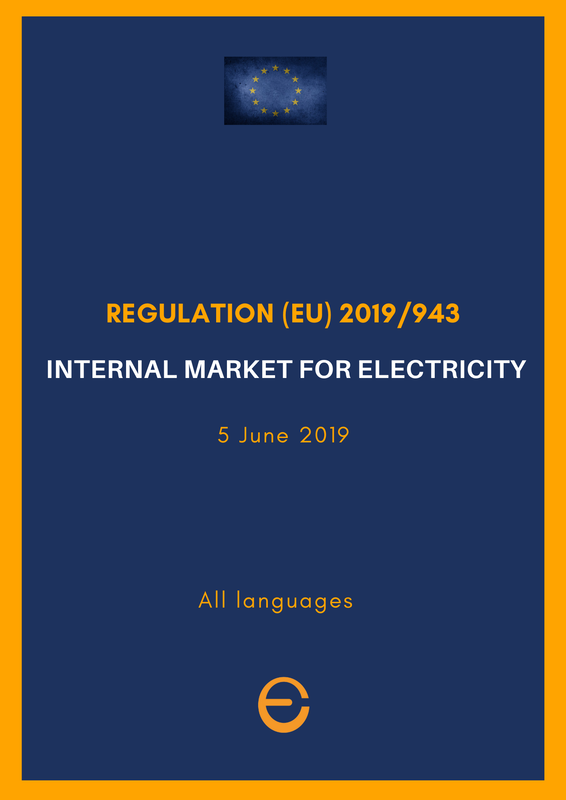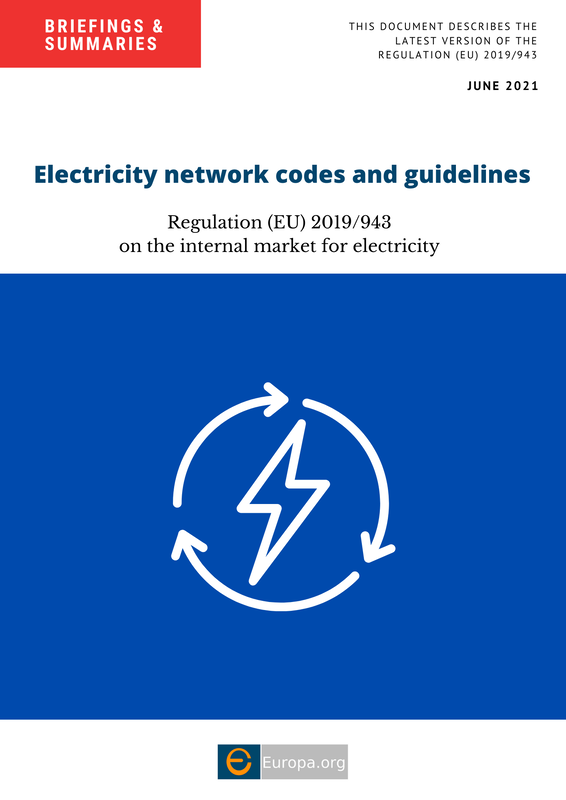The integration of national electricity grids into a European network guarantees a constant and safe flow of electricity from those who produce to those who consume. Since the possibilities for storing electricity are limited, an efficient network is essential to avoid blackouts, to ensure acceptable and competitive costs for consumers.
For this reason, the EU has developed codes and guidelines to make the electricity exchange system transparent, affordable and safe.
The European rules for electricity network
|
The EU has established rules for the exchange of electricity between EU countries. They are listed in the Regulation (EU) 2019/943. These rules, known as "codes" or "guidelines", help regulate the work of operators and determine how electricity is accessed by users across the EU and are legally binding. In the past, these network management and exchange rules were drafted nationally. As electricity is increasingly interconnected between countries, EU-wide rules effectively manage these flows of electricity in the internal energy market. |
Annual priority lists
Commission Decision (2018/496/EU) on the establishment of the annual priority lists for the development of network codes and guidelines for 2018
Access to the network
Regulation (EU) 2019/943 of the European Parliament and of the Council of 5 June 2019 on the internal market for electricity
Capacity allocation and congestion management
Regulation (EU) 2015/1222 on guideline on capacity allocation and congestion management (CACM) (check the consolidated version of 15/03/2021)
Forward capacity allocation
Regulation (EU) 2016/1719 on guideline on forward capacity allocation (check the consolidated version of 15/03/2021)
Balancing
Regulation (EU) 2017/2195 on guideline on electricity balancing (EB) (check the consolidated version of 15/03/2021)
Submission and publication of data
Regulation (EU) No 543/2013 on submission and publication of data in electricity markets and amending Annex I to Regulation (EC) No 714/2009 of the European Parliament and of the Council (check the consolidated version 01/01/2020)
Compensation mechanism and transmission charging
Regulation (838/2010/EU) on laying down guidelines relating to the inter-transmission system operator compensation mechanism and a common regulatory approach to transmission charging
Emergency and restoration
Regulation (EU) 2017/2196 on a network code on emergency and restoration entered into force on 18 December 2017. The emergency and restoration network code will set down rules relating to the management of the electricity transmission system in the emergency, blackout and restoration states. The main objective of the relevant rules is to bring the system back to the normal state.
Demand connection
Regulation (EU) 2016/1388 on a network code on demand connection (DCC) entered into force on 7 September 2016. The provisions of DCC set out detailed rules relating to the connection of, principally, new demand facilities to national electricity networks.
Requirements for generators
Regulation (EU) 2016/631 on a network code on requirement for grid connection of generators entered into force on 17 May 2016. The provisions of the regulation set out detailed rules relating to the connection of, principally, new power generating installations to national electricity networks.
High-voltage direct current
Regulation (EU) 2016/1447 on a network code on requirements for grid connection of high-voltage direct current system and direct current-connected power park modules (HVDC) entered into force on 28 September 2016. The provisions of HVDC set out detailed rules relating to the connection of, principally, new high-voltage direct current systems to national electricity networks.
System operation
Regulation (EU) 2017/1485 on a guideline on electricity transmission system operation (SO) entered into force on 14 September 2017. The provisions of SO establish a framework for the maintenance of the secure operation of the interconnected transmission system in real time (check the consolidated version of 15/03/2021).
The Electricity Regulatory Forum: Florence Forum
The forum, also referred to as the Florence Forum, was set up to discuss the creation of the internal electricity market.
The forum participants include national regulatory authorities, Member State governments, the European Commission, transmission system operators, electricity traders, consumers, network users, and power exchanges.
Since 1998 the forum has met once per year in Florence, Italy.
Source: European Union, http://www.europa.eu/, 1998-2024
|
Brussels - Milano - Nice - Tokyo
|
eEuropa Belgium
Avenue Louise, 367 1050 Brussels BELGIUM Bld. Franck Pilatte, 19 bis
06300 Nice FRANCE YONO HOUSE 9-1 KAMIOCHIAI, SAITAMA-SHI, SAITAMA-KEN 〒 338-0001 JAPAN Via S. Veniero 6 20148 Milano ITALY |
All rights reserved - © Copyright eEuropa Belgium 2020-2024



